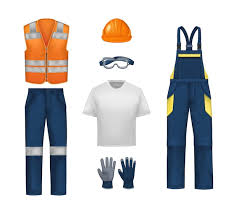different kinds of safety helmet product
Different Kinds of Safety Helmets An Essential Guide
In various industries, safety helmets play a vital role in protecting workers from head injuries caused by falling objects, collisions, and other workplace hazards. Understanding the different kinds of safety helmets available can significantly improve safety measures in any work environment. This article provides an overview of the various types of safety helmets, their features, and their applications.
1. General Purpose Hard Hats
General-purpose hard hats are among the most commonly used safety helmets. They are designed to protect against impact and penetration injuries, making them essential in construction, manufacturing, and other industrial settings. These helmets typically meet the ANSI (American National Standards Institute) standards and are classified into two types Type I (top impact protection) and Type II (lateral impact protection). They are available in various colors, allowing for easy identification of roles on a worksite.
2. Climbing and Sports Helmets
For activities like rock climbing, cycling, and skiing, specialized helmets are required. Climbing helmets are usually lightweight and designed for maximum ventilation, with a low-profile design to reduce wind resistance. These helmets are equipped with features such as adjustable straps and inner padding for a snug fit. In contrast, sports helmets are tailored for specific activities, emphasizing impact resistance and comfort. For instance, biking helmets often include visors and additional padding.
Firefighting helmets are constructed to withstand extreme temperatures and protect against falling debris, heat, and flames. Made from heat-resistant materials like fiberglass or thermoplastic, these helmets often come with additional features such as face shields and reflective strips for visibility. Firefighting helmets are designed to be worn with other protective gear, providing comprehensive safety for firefighters in hazardous environments.
4. Electrical Safety Helmets
different kinds of safety helmet product

Electrical safety helmets are engineered to protect workers from electrical hazards. Typically made of non-conductive materials, these helmets help prevent electrical shock and are essential for those working in power generation, electrical maintenance, and other related fields. They often come equipped with additional features, such as chin straps and internal suspension systems, to ensure a secure fit during dynamic movements.
5. Welding Helmets
Welding helmets are specialized headgear designed to protect the face and eyes from the intense light and UV radiation produced during welding. These helmets come with auto-darkening filters that adjust the tint based on light intensity, providing safety and comfort for welders. They also feature heat resistance and can be equipped with additional face shields for comprehensive protection against sparks and molten metal.
6. Industrial Safety Helmets with Additional Features
With advancements in technology, many industrial safety helmets now come with added functionalities. Some helmets feature integrated communication systems, allowing workers to communicate effectively in noisy environments without removing their head protection. Others provide enhanced visibility through built-in LED lights or reflective materials. There are even helmets designed with augmented reality capabilities, providing information overlays directly in the worker's field of vision.
7. Customizable Safety Helmets
Customization options for safety helmets are also available to enhance safety and functionality. Workers can personalize their helmets with company logos, additional protective attachments, or unique colors to improve identification on-site. Customizable options ensure that the helmets not only fulfill safety requirements but also promote team unity and brand visibility.
Conclusion
Safety helmets are indispensable in protecting workers in various industries from head-related injuries. With an array of helmets designed for specific activities—from general use to specialized applications like firefighting and welding—there’s a safety helmet suited for almost every profession. As safety standards continue to evolve, embracing technological advancements in helmet design can further enhance safety in the workplace. Ensuring that employees are equipped with the right type of safety helmet tailored to their specific needs is a fundamental element of any effective workplace safety strategy. Whether on a construction site, a sports event, or any hazardous environment, the importance of wearing the proper safety helmet cannot be overstated.
-
Top HDPE Safety Helmets - Lightweight, Durable Head Protection
NewsAug.01,2025
-
Top AI Safety Clothing with GPT-4 Turbo | Smart Protection
NewsJul.31,2025
-
Face Shield Safety Helmet with GPT-4 Turbo AI Safety
NewsJul.31,2025
-
CE Working Clothing for Construction & Welding Safety
NewsJul.30,2025
-
Premium Safety Helmet with Visor for Construction & Industrial Use
NewsJul.29,2025
-
High-Quality CE Working Clothing for Safety and Construction
NewsJul.29,2025
